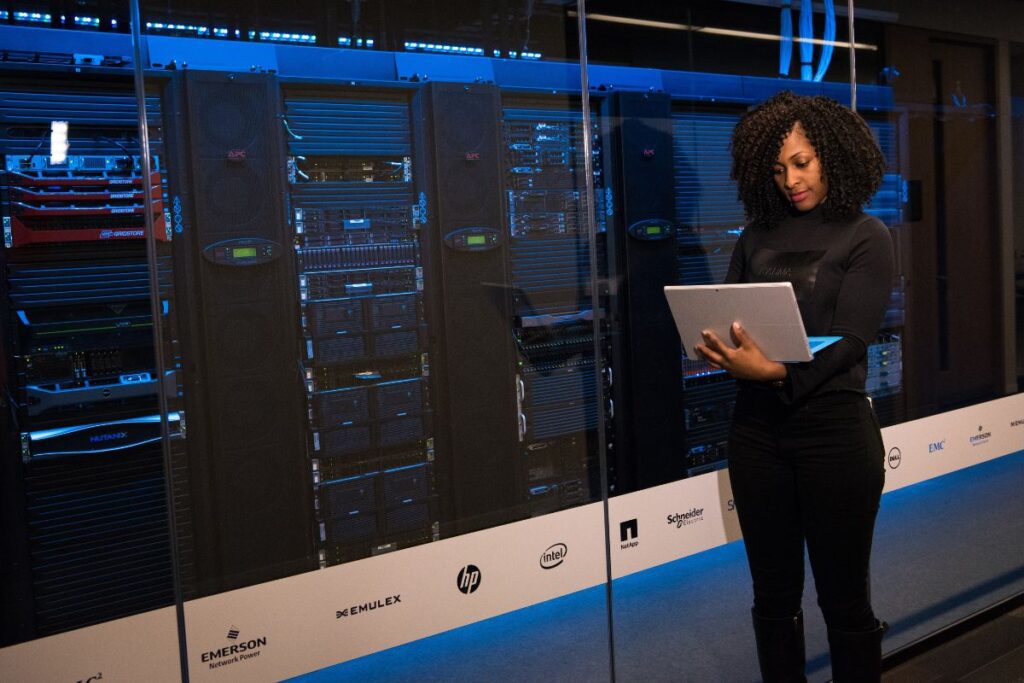An optimally set up structured data cabling center should be reliable, easy to maintain, scalable, and provide convenience. This will ensure that your data flow is seamless.
As your organization’s data center plays such an essential role, you’ll want to make sure it’s set up and performing at its best.
This guide explores everything you need to know about how this works.
What Is A Structured Cabling Data Center?
A structured cabling data center refers to the way a data center’s network infrastructure is organized. These data centers are standardized and specially designed for optimal connectivity and data transmission.
Creating a structured cabling data center involves carefully installing cabling, connectors, and any related hardware in a data center to maximize efficiency and reliability between the network devices and equipment.
Taking a systematic and structured approach to cabling makes network management, maintenance, and future expansions of the data center’s network infrastructure a lot easier.
What Does A Structured Cabling Data Center Involve?
There are a few key elements and characteristics that go into any structured cabling data center.
Standardization
Structured cabling in a data center has to be standardized. This involves following industry standards and specifications to ensure all cabling components and equipment are set up the same way and are compatible.
Organization
In structured data centers, cables and connections must be neatly organized. This can be done using cable trays, racks, and patch panels.

One of the main reasons to apply structured cabling is to minimize clutter and make it easier to access and identify cables. You’ll need a good organizational system in place to do this.
Scalability
Structured cabling data centers are designed for easy expansion. If you need to add extra cables or network devices to the data center, the organized approach should facilitate this.
As data centers have constantly evolving needs, setting them up for convenient scalability is crucial.
Reliability
Structured cabling is designed to minimize signal interference, reduce downtime, and enhance the overall reliability of data transmission. When a data center is properly planned and put together, it can make a big difference in how the center performs.
Flexibility
Structured data center cabling can support all kinds of network protocols and technologies. This allows data centers to adapt to ever-changing requirements and technologies. Again, this also makes it easier for your data center to scale up.
Ease Of Maintenance
One of the most important reasons to apply structured cabling in your data center is to simplify maintenance.
Any troubleshooting, maintenance, or upgrades to the cabling becomes a lot easier, as cables and connections are well-documented and organized. If you own a data center, then taking a structured cabling approach should be at the top of your priority list.
Key Components Of Structured Cabling
A structured cabling data center needs to be carefully planned and put together. Here are some of the essential components to remember.

Cables
Of course, you can’t implement structured cabling without cables.
Cables come in many different forms, like copper and fiber optics. Data centers often involve a combination of different cabling types, which is one of the reasons why a structured cabling approach is so important.
Fiber optic cables are best for long-distance and high-speed connections, while copper cables are commonly used for shorter runs. Make sure you apply the right cables for your data center’s needs.
Connectors And Patch Panels
Connectors allow cables to be terminated and connected to networking equipment. Patch panels provide a central point for cable connections, which makes maintenance and troubleshooting an easier process.
Your structured data center will need to involve a combination of connectors and patch panels to improve cabling organization and access.
Racks And Cabinets
A key component of a well-structured data center is organization. Racks and panels help you achieve this by neatly housing the networking equipment, servers, and other hardware.
You’ll need to have proper airflow and cooling considerations in the racks and panels to maintain your data center conditions. This is important for enhancing data center performance.
Cable Management
Cable trays, raceways, and convenient ties help organize and route cables neatly. This reduces clutter and improves airflow in the data center. Well-organized cabling also makes any future upgrades and maintenance a lot easier.
Switches And Routers
You need switches and routers for routing data traffic within the data center and connecting it to external networks. Ensure you set these up carefully to maximize efficiency in your data center.

Best Practices For Maintaining A Structured Cabling Data Center
There are a number of things to consider when setting up structured cabling in your data center. You’ll need to make sure that the process is appropriately planned to help you maximize effectiveness.
Here are some best practices to keep in mind.
Stick To Industry Standards
Follow industry standards like TIA/EIA and ISO/IEC for structured cabling design and installation. This makes it easier to maintain the data center and it ensures your connections and cabling method are safe.
Document Your Cabling
Keep detailed records of the cabling layout, configurations, and any changes made over time. This will help you easily assess the data center and understand exactly how cabling is laid out, which is important if any network issues arise.
Testing And Certification
Regularly test and certify cables to ensure they meet performance standards. Skipping this is not only a safety hazard, but it could also impact your data center’s performance.
Regular Maintenance
Conduct routine inspections and maintenance. This will help you identify and fix any potential issues quickly – before they turn into bigger problems later on. The last thing you want is a cabling issue to go unnoticed, only turning into a greater issue over time.
Conclusion
It’s essential that you make the most of your data center and apply cabling in a way that maximizes efficiency and ease of use. This is why taking the correct structured cabling approach is so important.
Need help setting up your structured cabling data center? Get in touch with us at Stellar Communications, where we can help optimize your network for greater performance.









